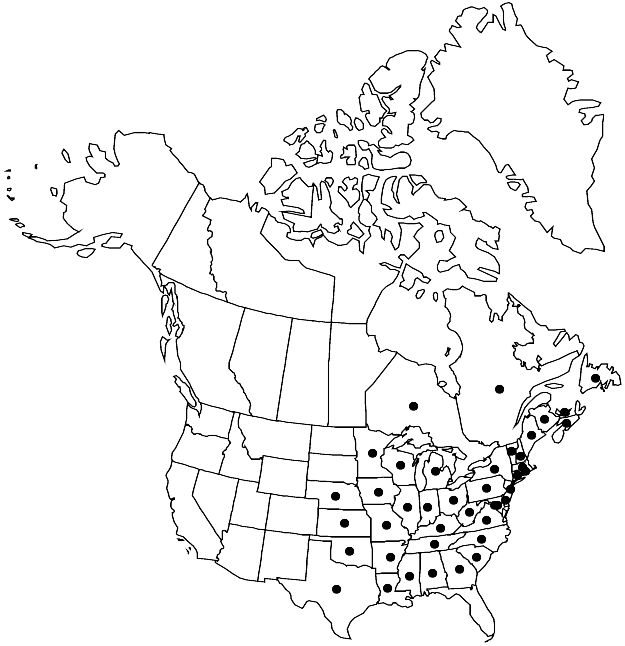Hypnum curvifolium
Sp. Musc. Frond., 285, plate 75, figs. 4–9. 1801.
Plants medium-sized to large, light green to yellow-green, glossy. Stems 4–10 cm, orange-brown to reddish, procumbent to suberect, sparsely branched, regularly pinnate, branches 1.5 cm; hyalodermis absent, central strand weakly differentiated; pseudoparaphyllia foliose. Stem leaves falcate-secund, ovate, narrowing to apex, 1.5–2.5 × 0.7–0.8 mm; base slightly decurrent, auriculate, sometimes only on one side; margins plane, sinuate to entire basally, gradually weakly toothed near apex; acumen relatively broad; costa double, short; alar cells few, region well defined, often excavate, in 1–3 rows across base; basal laminal cells broader than medial cells, pigmented, walls not porose; medial cells 70–80 × 4–5 µm. Sexual condition dioicous; inner perichaetial leaves lanceolate to subulate. Seta orange-yellow to brownish when mature, 2–4.5 cm. Capsule inclined to horizontal, reddish, obovoid-cylindric, 2.5–3 mm; annulus broad, 2-seriate; operculum conic; endostome cilia 2 or 3.
Phenology: Capsules mature Jul–Aug.
Habitat: Terrestrial, decaying logs in woodlands, rock, peatlands
Elevation: low to high elevations (0-2000 m)
Distribution

N.B., Nfld. and Labr. (Nfld.), N.S., Ont., P.E.I., Que., Ala., Ark., Conn., Del., D.C., Ga., Ill., Ind., Iowa, Kans., Ky., La., Maine, Md., Mass., Mich., Minn., Miss., Mo., Nebr., N.H., N.J., N.Y., N.C., Ohio, Okla., Pa., R.I., S.C., Tenn., Tex., Vt., Va., W.Va., Wis.
Discussion
Hypnum curvifolium might be confused with H. lindbergii; it differs in its more plumose branching, more circinate leaves, and lack of stem hyalodermis. Also, H. lindbergii has a more extensive and often decurrent alar region. Hypnum imponens is distinguishable by its usually smaller habit size and toothed pseudoparaphyllia. Hypnum curvifolium has stems 0.5–3 mm wide; the leaves are curved to the insertion with enlarged, hyaline alar cells; the supra-alar cells are ovoid to triangular and smaller than the alar cells; the laminal cells are sometimes projecting abaxially at the distal ends; the capsules are plicate when dry; and the endostome cilia are nodulose. Sporophytes are produced in summer.
Selected References
None.